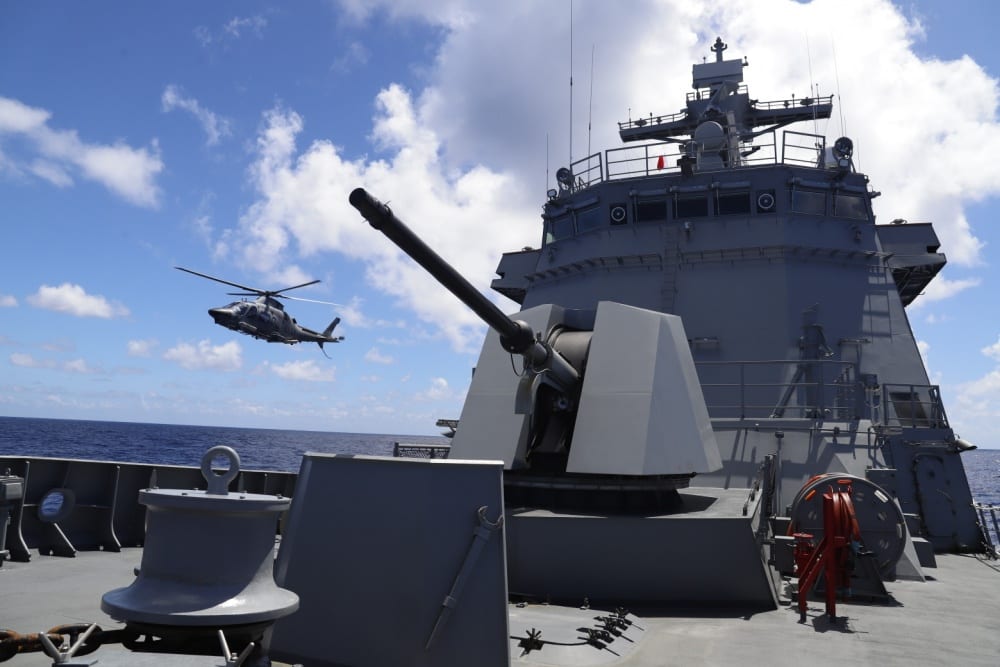Philippine Navy Retires Four Ships as it Transitions to Modern Fleet

The Republic of the Philippines’ navy is making a pivot from older legacy ships and craft to newer and more capable surface combatants.
On March 1, 2021, the RPN decommissioned four of its oldest ships in a ceremony at the Heracleo Alano Naval Base in Sangley Point, Cavite City on the island of Luzon. Following guidance from Defense Secretary Delfin Lorenzana, decommissioning “vintage assets” paves the way for the new platforms pursuant to the Armed Forces of the Philippines Modernization Program.
To be decommissioned are Patrol Corvettes BRP Pangasinan (PS-31) and BRP Quezon (PS-70), and Fast Attack Craft BRP Salvador Abcede (PC-114) and BRP Emilio Liwanag (PC-118).
“Indeed, the decommissioning of PS-31, PS-70, PC-118, and PC-114 is a symbolism that there is a new horizon in sight. We are geared towards becoming a stronger and more capable Philippine navy [PN]. With our newest acquisitions, we are more confident that we can better perform our mandate and provide better protection of our maritime domains,” Vice Adm. Giovanni Carlo Bacordo, chief of the navy, said in a statement.
“The accomplishments of these PN vessels won’t be possible without their courageous crew. We are preparing and transitioning from a legacy navy into a modern navy, and part of this is making sure that we allocate our valuable resources and manpower to our new platforms,” Bacordo said in his speech, delivered by PN vice commander Rear Adm. Adeluis Bordado.
The Navy is implementing Defense Secretary Delfin Lorenzana’s guidance to decommission vintage assets to pave the way for the incoming platforms as part of the Armed Forces of the Philippines Modernization Program, and supports the PN’s capability development program to acquire modern platforms with state-of-the-art equipment, sensors, weapons and combat management systems.
In a release from the government-run Philippine News Agency (PNA), Bacordo said the old ships are too old and costly to maintain and operate, and that by decommissioning them, the Navy could “devote more resources to our newly-acquired ships.”
Long-serving veterans
BRP Quezon was one of the last of the 95 Auk-class of minesweepers built during the second world war. She was originally the 221-foot, 1,100-ton Auk-class minesweeper USS Vigilance (AM-324), and was commissioned in January 1943, serving in the Pacific during World War II. She was transferred to the Philippines in 1967 and underwent a major refit in the mid-1990s. At the time of her decommissioning, Quezon was one of the oldest active fighting ships in the world, serving for 77 years, of which 53 years were with the Philippine navy.
The 185-foot, 914-ton BRP Pangasinan began life as PCE 891, a patrol craft commissioned in the U.S. Navy in 1944 and transferred to the Philippines four years later. Although her armament changed over the years, at the time of her deactivation she carried a Mk.26 3-inch/50-caliber gun, three twin Mk.1 Bofors 40mm cannons, four Mk.10 Oerlikon 20mm cannons, and four M2 Browning 12.7mm 50-caliber machine guns. She had 72 years of active service at the time of her retirement.
The two Tomas Batilo-class patrol boats among the four ships deactivated, BRP Salvador Abcede (PC-114) and BRP Emilio Liwanag (PC-118), previously served in the Republic of Korea navy as fast attack craft, designated Patrol Killer Medium (PKM), and were the last of eight ex-Korean PKMs in the Philippine Navy. The PKMs were built in Korea in the 1970s. Five of them were acquired in 1995, one in 1998 and two in 2006. Salvador Abcede and Emilio Liwanag were transferred from the Korean navy in 1996.
The 121-foot, 170-ton PKMs could achieve speeds up to 37 knots, and were armed with Bofors 40/60 caliber guns and pair of Oerlikon 20mm/70 caliber Gatling guns and two 12.7mm/50 caliber machine guns.
Fleet renewal
New ships are joining the fleet. Two new Jose Rizal-class frigates, built by Hyundai Heavy Industries (HHI) in South Korea BRP Antonio Luna (FF 151) was commissioned at Subic Bay earlier this month. The lead ship in the class, BRP Jose Rizal (FF 150), was commissioned in July 2020, and promptly deployed to Hawaii to participate in the Rim of the Pacific multi-national fleet exercise.
These two ships are the Philippine Navy’s most modern surface combatants, and the first with surface-to-air missiles for defense, but the ships were delivered without all of the combat systems installed, including VLS launchers, a close-in weapon system and towed array sonar. They will also be able to embark an AW-159 Wildcat helicopter.
The Philippine navy also received one former Republic of Korea navy Pohang-class coastal defense and anti-submarine corvettes, the BRP Conrado Yap (PS 39), in 2019. At 353 feet long and 2,600 tons, she carries a 76-mm gun, twin 40mm/70 caliber guns and torpedoes.
The 24 ships of the Pohang class were designed and built in Korea and commissioned in the Republic of Korea navy between 1984 and 1993. Ten remain in service with the ROKN, while others have been disposed of or transferred to other navies, as was BRP Conrado Yap. One of the ships in the class, ROKS Cheonan (PCC 772), was sunk by North Korean torpedoes in 1989.
Three former U.S. Coast Guard 378-foot Hamilton-class cutters — Hamilton (WHEC 715), Dallas (WHEC 716) and Boutwell (WHEC 719) — were transferred to the Philippine navy between 2011 and 2016 and became BRP Gregorio del Pilar (PS-15), BRP Ramon Alcaraz (PS 16) and BRP Andres Bonifacio (PS 17), respectively. Although these former 3,250-ton cutters had been in service for about 45 years, they were extensively modernized before being turned over to the Philippines.